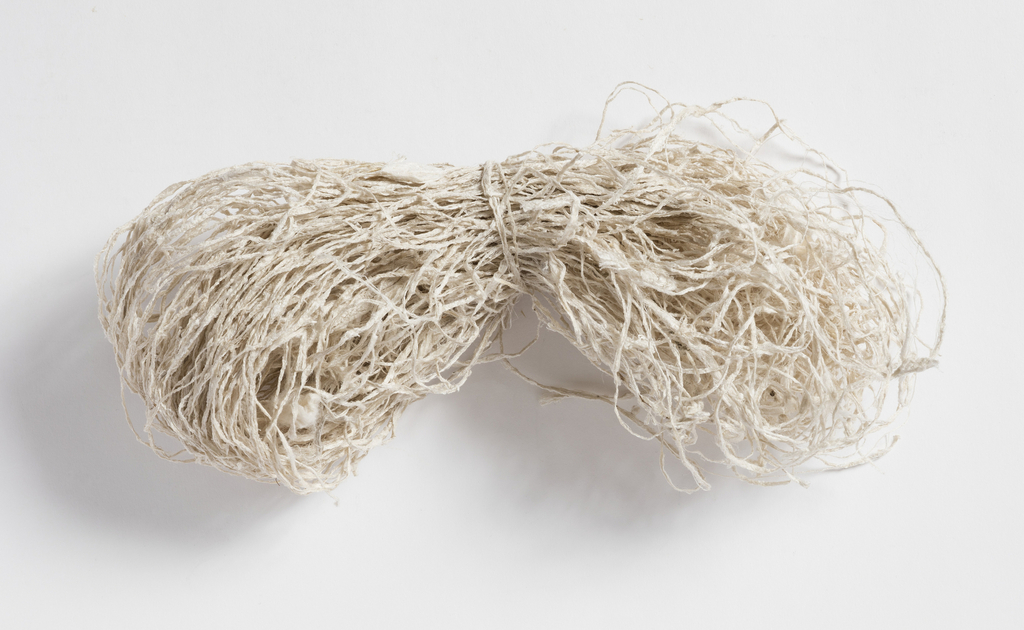This post is part of the blog series Scraps Stories dedicated to exploring sustainable textiles and fashion, in relation to the exhibition Scraps: Fashion, Textiles, and Creative Reuse.

Skeins of Kibiso. 2016, Gift of Reiko Sudo, NUNO, 5873.1.2015
Kibi-what? Kibiso is a Japanese word referring to a type of silk waste. To understand where this material comes from, we have to go back to the process of silk-making. To create their protective cocoon and prepare their transformation from pupa to silkmoth, silkworms spin two strands of fibroin, a protein also called liquid silk, which are covered in sericin, a sticky protein substance. Once released by the silkworms, the material solidifies in the air in a continuous filament. Before moths have the time to hatch, cocoons are gathered and processed to extract the filament. The bulk of the cocoon is made from a filament 1/10 the size of a human hair, but the very outside layer is much coarser. [1] This silk waste, called kibiso, is collected during the reeling process, boiled to remove the gummy sericin, straightened, cleaned, and combed into a yarn. This thick cocoon layer is also called frison in the USA, knubbs in Great Britain, sarnak in India, frissonette in France, and strusa in Italy. Because kibiso fiber covers and protects the outside of the cocoon, it is water repellent and UV resistant. Machine-made kibiso yarn was originally produced in Yokohama, the center of silk exportation in Japan between the 1860s until the 1920s. This silk waste was considered a high quality material, and produced good quantities with little waste. However the industrial process to obtain this fiber was not considered cost-effective and it progressively lost its appeal.[2] Since 2008, Reiko Sudo, textile designer and managing director of NUNO, has played a crucial role in the revival of kibiso yarn production. She has worked closely with artisans from Tsuruoka, Yamagata Prefecture, one of the major production centers in Japan, to develop her line of textiles using this specific fiber and turning it into a luxury product.[3]
[1] H. Panda. The Complete Book on Textile Processing and Silk Reeling Technology. Delhi: Asia Pacific Business Press, 2010, 117-118.
[2] Hollins Rayner, Silk Throwing and Waste Silk Spinning, London: Scott, Greenwood & Son, 1903, 41.
[3] Howard Risatti, “Kiyomi Iwata, An Evolution” in Blackbird, An Online Journal of Literature and the Arts, Fall 2015 Vol.14 No.2, accessed January 22, 2016 http://www.t-silk.co.jp/